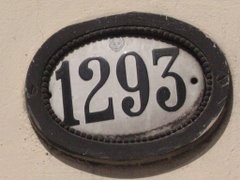In the late 19th and early 20th century Argentina was one of the world's wealthiest nations and the Alvear family was at the pinnacle of belle Buenos Aires society. In 1897 Josefina de Alvear, a niece of the city's first mayor and a cousin of President Marcelo T. Alvear, married Matias Erraturiz at the Cathedral of Buenos Aires. After many years in Europe, the family returned in 1917 and moved into their spectacular new palace on Avenida Libertador. Their French architect, Rene Sergent, designed a total of 15 projects for Argentine clients of which 5 were completed. One of the others is the former home of Josephina's sister, the Bosch-Alvear Palace, now the American Embassy residence.
While in Europe the Erraturiz-Alvears undoubtedly visited Auguste Rodin's own exhibit at the Parisian World's Fair. They later commissioned a massive fireplace from him that was never completed. A small model signed by Rodin can be viewed at the mansion which opened its doors as the Museo Nacional de Arte Decorativo in 1937. The museum features paintings and sculpture from the family's collection by El Greco, Corot, Delacroix, Fragonard and Manet. But the palacio itself is the star of the show and will be truly appreciated by those who enjoy spectacular homes from days gone by. Sergent's concept was a revival of the French neoclassical style of the 18th century and many rooms were inspired by landmark buildings in France: for example the ballroom after the Hotel Soubise and the dinning room after the Petit Trianon in Versailles. Two exceptions are the renaissance Great Hall which was designed to feature the family's existing collection of tapestries, and an excellent neobaroque sitting room by the Catalan artist Jose Maria Sert. The Sert chamber was commissioned at the request of Matias (Mato) E. Alvear, the couple's only son.
Current visitors will enjoy a bonus treat: a spectacular collection of portrait miniatures (the forerunner of the wallet photograph) now on display in the family living room. The collection includes numerous 18th century watercolor on ivory works by well known artists who specialized in miniatures. Most are framed in gold pendants and many are pocket masterpieces. Among the sitters are English, French and Russian nobility including numerous children. A very tiny painting of Nicolas V of Russia is set in a diamond encrusted ring. I enjoyed looking at all those little faces from another time and place. While some of the miniatures served political purposes and were mass-produced, others were one-of-a-kind treasures kept close to the heart on long journeys across an ocean.
A blog which may appeal to those who enjoy stories about people, politics, economics, sports, and travel. In and around Argentina and the USA.
3/20/2008
3/19/2008
Biblioteca Nacional de la Republica Argentina
Hulking hideously over a leafy section of Recoleta is the brutalist Biblioteca Nacional de la Republica Argentina. This raw concrete monster recalls what went wrong in cities and on campuses across North America and the UK during the construction boom of the 1960s. This Buenos Aires project was announced in 1960 - just as municipalities and universities up north were starting to throw up inexpensive slabs of this type. In the 80s, Prince Charles became the most famous critic of the architecture and by the time Argentina's new National Library finally opened its doors in 1993, many of its unpopular siblings in England, Canada and the USA had been demolished.
The library's block-like unfriendliness punishes innocent citizens who happen to look up as they walk by. The top heavy structure, resembling an obsolete offshore oil rig, sits on the site of a house the Perons lived in until Evita's death in 1952. Down the slope on Libertador a statue shows her fleeing the scene, as if afraid the Biblioteca will topple over on her head.
The National Library suffers from problems that are apparently common in brutalist buildings. For example the harsh concrete facade has aged poorly and attracted graffiti. And careless maintenance doesn't help matters. A few letters have fallen off the sign above the hard-to-find entrance, and national flags decorating the broken-tile plaza are faded and dirty. A common garden hose and plastic kitchen pail are visible in the bushes. Celebrating only it's 15th anniversary, the library looks easily three times as old.
Inside I found only one working elevator and a surprisingly small amount of public space. Also missing were any noticeable books. The few students in residence were, however, enjoying absolute silence and spectacular views.
A quote from a wikipedia summarizes quite nicely what was terribly wrong with the decision to build this library in this location: "Brutalism...is criticized as disregarding the social, historic, and architectural environment of its surroundings, making the introduction of such structures in existing developed areas appear starkly out of place and alien." The Biblioteca Nacional is unfortunately a spectacular example of this type of incongruous mismatch.
Subscribe to:
Posts (Atom)









































































